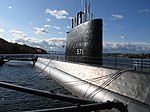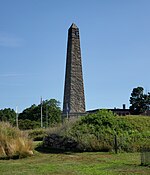Marine Science Magnet High School
2011 establishments in ConnecticutBuildings and structures in Groton, ConnecticutEducational institutions established in 2011Public high schools in ConnecticutSchools in New London County, Connecticut
Marine Science Magnet High School of Southeastern Connecticut was the first public high school in Groton, Connecticut, in the United States. It opened on September 1, 2011.In the academic year 2012–2013 there were 178 students enrolled in grades 9–11, of which 94 were male and 84 female. Approximately 93% were ethnically white, and 7% Hispanic.
Excerpt from the Wikipedia article Marine Science Magnet High School (License: CC BY-SA 3.0, Authors).Marine Science Magnet High School
Shennecossett Road,
Geographical coordinates (GPS) Address Nearby Places Show on map
Geographical coordinates (GPS)
| Latitude | Longitude |
|---|---|
| N 41.337507 ° | E -72.071638 ° |
Address
Shennecossett Road 130
06340 , City of Groton
United States
Open on Google Maps








